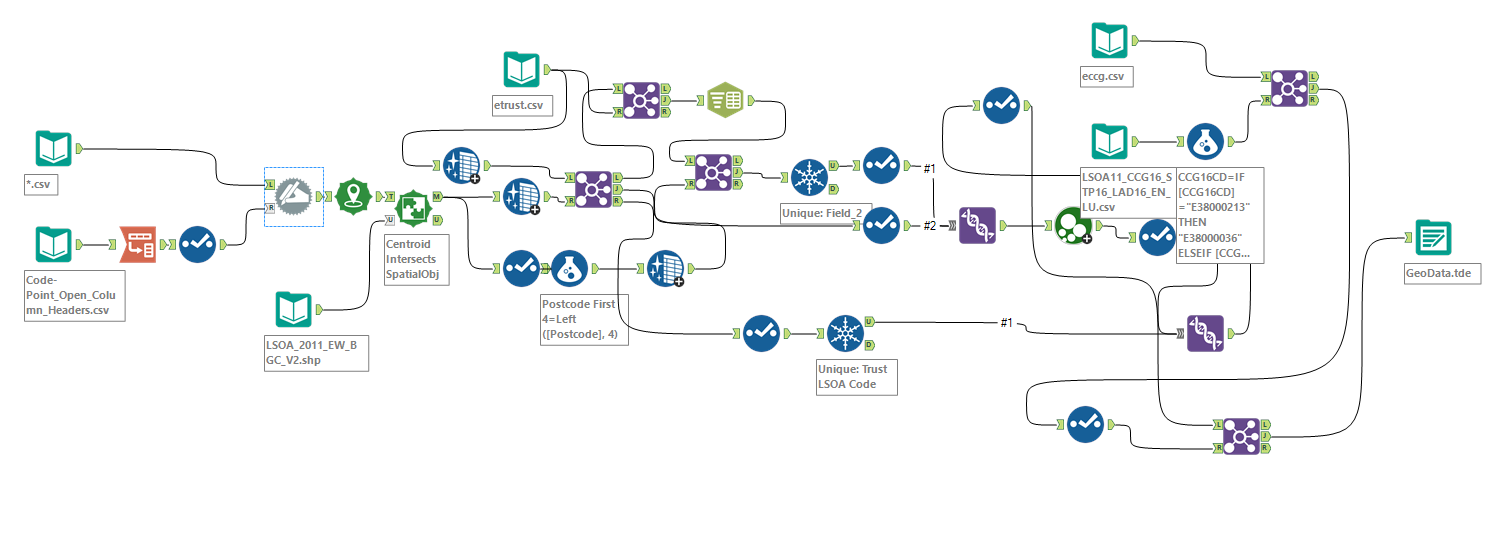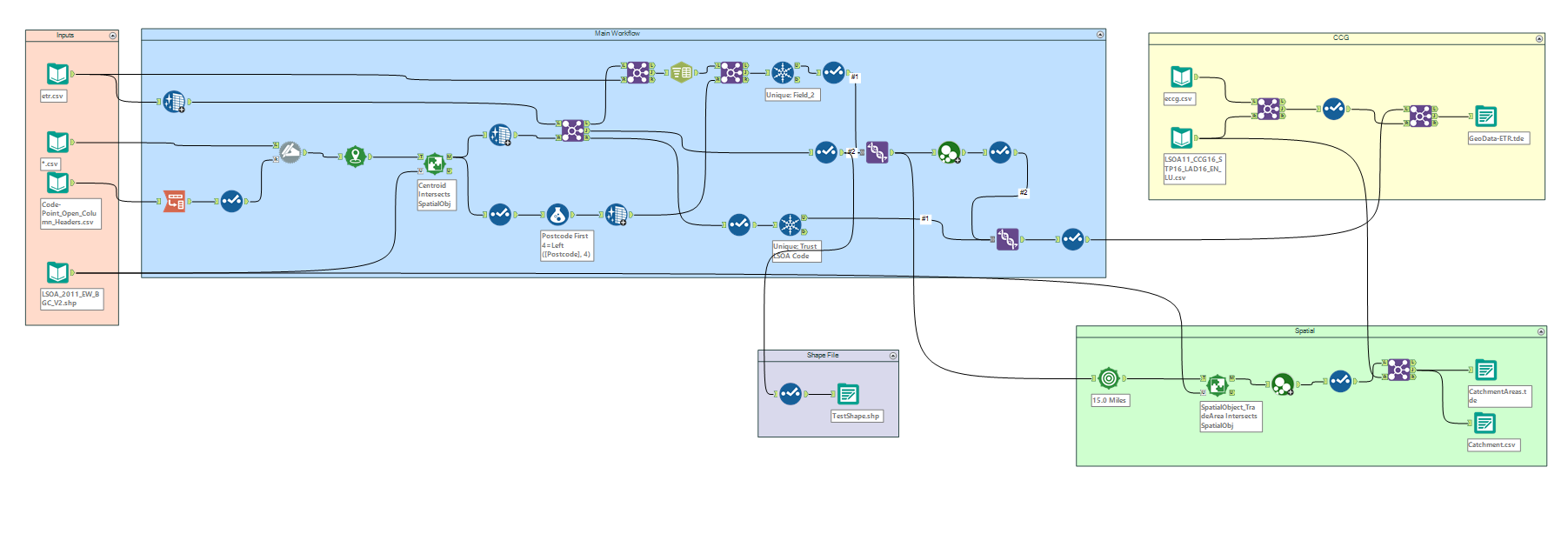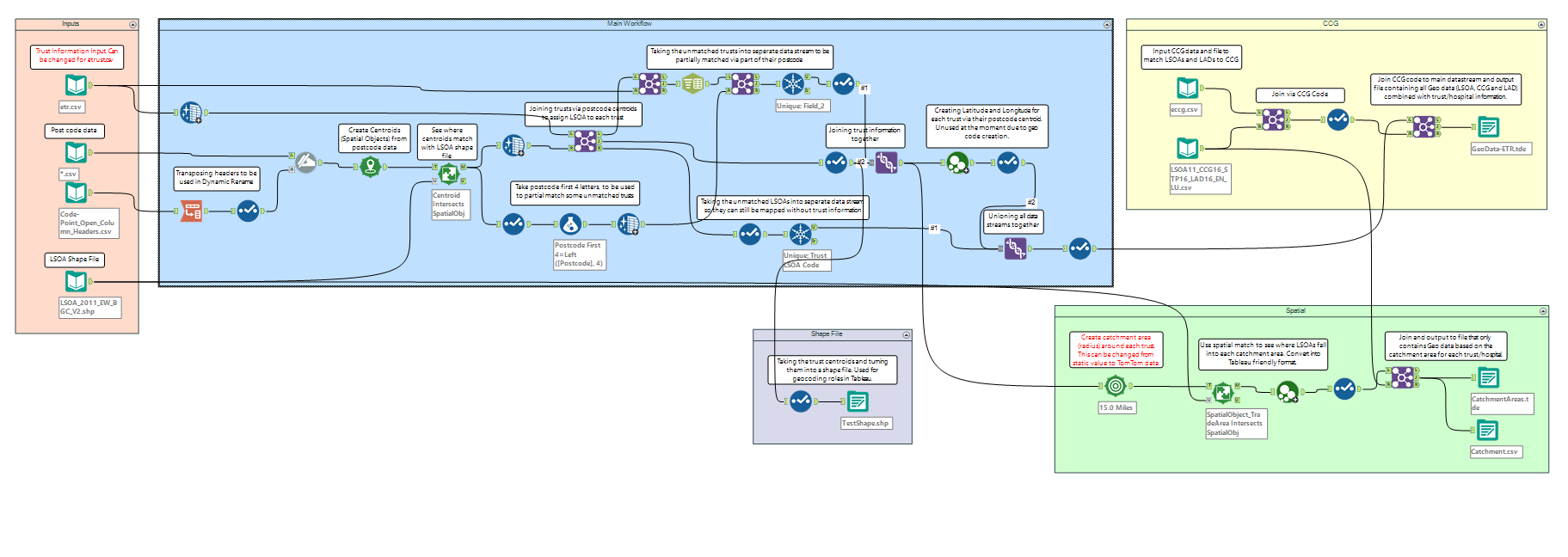Comments and Containers are an essential part of your workflow if anyone apart from the creator will be looking at or using the workflow.
First of all, we will touch on the most important of the two, Containers. They have 2 important functions, splitting data into manageable sections and disabling parts of your workflow to test other sections.
Splitting up the data into different sections can help the user see what each part of your workflow is doing. For example, look at the workflow below:

Messy Workflow
It is very hard for anyone to see exactly what each tool is doing and how it links to the other tools. To make sense of this we can place the groups of tools into separate containers based on their inputs, functions and outputs. See below the example workflow that shows off containers:

Containers
It is very easy for the end user to see what each section relates to and shows off the relationships and links between the tools. The second use of containers is the ability to disable the tools inside the container so they do not run when the workflow is executed. This can be useful if testing a workflow and if you do not want to output any data during the test you can create a container around the outputs and then disable this container. This is a lot eaiser and more efficient then deleting connections or deleting the tools entirely.
 The next step is to add comments to the tools and groups to really explain what the tool is doing without the user having to decode the tool inputs and outputs.
The next step is to add comments to the tools and groups to really explain what the tool is doing without the user having to decode the tool inputs and outputs.
Combined these tools can really organise your workflow into an easy to understand tool that can be passed from user to user without having to explain in length the functions and usage of the tool.

Comments and Containers
